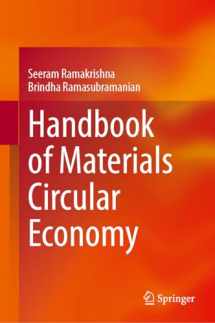
Handbook of Materials Circular Economy
Book details
Summary
Description
This book provides comprehensive and practical information on the design and implementation of circular systems for various industries, with a focus on Environmental, Social, and Governance (ESG) factors. The scope of the handbook is to cover the materials circularity in a deeper analysis in accordance to ESG used in various industries such as oil and gas, IT, electronics, medicine, textile, and more. The handbook also covers the key principles of the circular economy, including material efficiency, resource conservation, and waste reduction, and how they impact to different industries. It further critically analyses the challenges and opportunities associated with implementing circular systems in these industries, including the framework for new business models and technical innovations, and the potential benefits in terms of environmental protection, social responsibility, and economic competitiveness.
In addition to providing practical information, the handbookalso addresses the ESG factors associated with the circular economy exclusively for each industry. This would include the impact of circular systems on the environment, including the reduction of greenhouse gas emissions and the protection of biodiversity, as well as the social benefits, such as job creation, and the economic benefits, such as cost savings and increased competitiveness.
The ultimate goal of the handbook should be to provide guidance and support in a niche evaluation for the development of a more sustainable and equitable future, where the circular economy is a key enabler.


We would LOVE it if you could help us and other readers by reviewing the book
Book review



